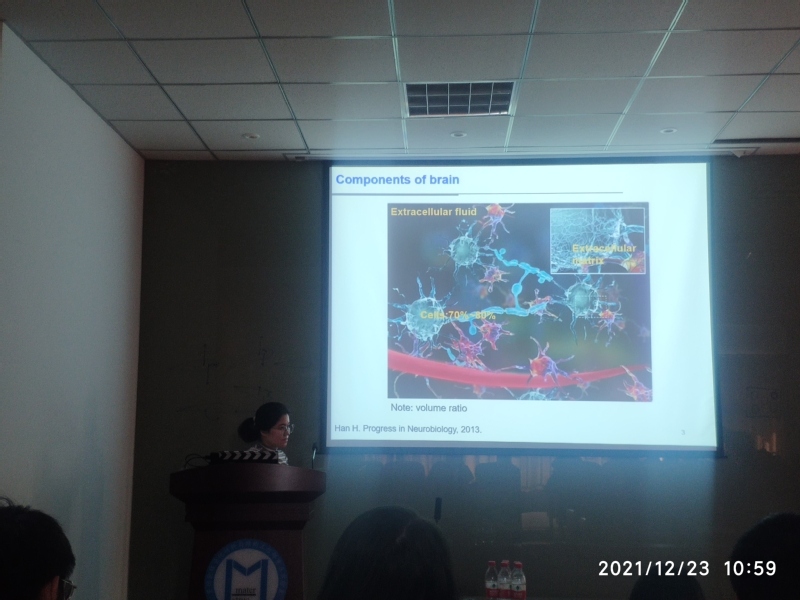2021年12月23日,实验室本学期第十三次全英文组会在A8号楼7楼召开,汇报人和汇报主题分别为:
博士研究生:Lijun Su, Cross-scale fluid-solid coupling properties of brain.

Brain tissue is composed of the cell (e.g. astrocytes, neurons), extracellular matrix (ECM), and extracellular fluid. It is cross-scale ranging from the micron scale to the centimeter scale. Brain is a cross-scale liquid-filled porous material with approximately 80% liquid and 20% solid matrix. There are three fluid networks of our brain: blood, extracellular fluid, cerebrospinal fluid (CSF). The three fluid networks exchange with each other to sustain the brain behavior and function. Under normal conditions, the fluid exchange is in equilibrium. However,following brain impact, and hemorrhage, water balance is disturbed and brain swelling occurs. Brain swelling refers to water accumulation in the brain, which produces an increase in the brain volume. The flow of the fluid causes the deformation of the solid, and in turn the deformation of the solid causes the flow of the fluid. Therefore, there is fluid-solid coupling in normal and pathological brain. The solid deformation depends on the properties of the material itself, modulus and Poisson’s ratio. The ease of fluid flow is expressed in terms of hydraulic permeability. Permeability coefficient is derived from Darcy. Darcy conducted experimental studies of water passing through saturated sand and found that the fluid flow rate is proportional to the pressure gradient when the flow rate is small. This constant of proportionality in Darcy’s law is called hydraulic permeability.